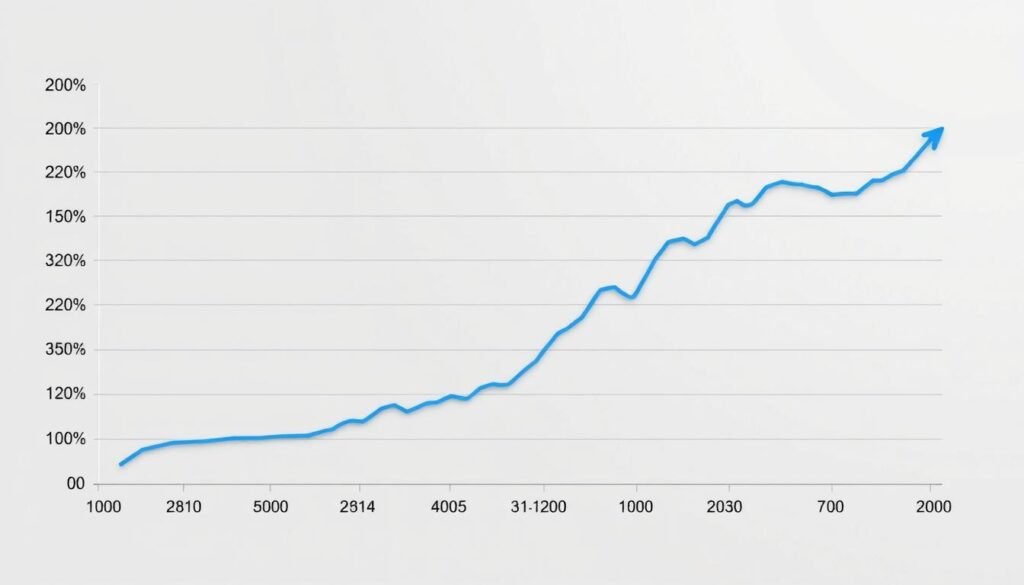President Donald Trump’s “One Big Beautiful Bill” has officially passed through Congress, marking a watershed moment for American economic policy. This sweeping legislation makes permanent the 2017 tax cuts while introducing new relief measures, deep spending cuts to social programs, and significant changes to energy policy. As investors digest these developments, a crucial question emerges: will these policies trigger a sustained market boom or inflate a dangerous bubble?
The bill’s passage has already sent ripples through financial markets, with analysts divided on its long-term implications. Some see the potential for unleashed corporate growth and investor confidence, while others warn of mounting debt and economic instability. Understanding these competing perspectives is essential for investors navigating this new landscape.
Key Components of Trump’s “Big Beautiful Bill”
The legislation represents one of the most significant economic policy shifts in recent years, with several provisions that could directly impact the stock market:
Stay Informed on Market Movements
Get expert analysis on how Trump’s economic policies could affect your portfolio. Our weekly market briefing delivers actionable insights straight to your inbox.
Short-Term vs. Long-Term Market Effects
The immediate market reaction to the bill’s passage has been cautiously positive, with the S&P 500 and Nasdaq showing modest gains. However, the long-term outlook presents a more complex picture that investors should carefully consider.
Short-Term Outlook (6-12 Months)
Long-Term Concerns (2-5 Years)

Billionaire Ray Dalio has issued stark warnings about the bill’s potential consequences, stating that “unless this path is soon rectified to bring the budget deficit from roughly 7% of GDP to about 3% by making adjustments to spending, taxes, and interest rates, big, painful disruptions will likely occur.” This perspective highlights the tension between short-term market optimism and longer-term structural concerns.
Sector-by-Sector Impact Analysis
The legislation’s effects will not be uniform across all market sectors. Understanding these nuances is crucial for portfolio positioning in the coming years.
Energy Sector
The bill’s elimination of clean energy tax credits represents a significant shift in energy policy. Tax credits for electric vehicles, solar installations, and energy-efficient home improvements will end by late 2025, potentially benefiting traditional energy companies while creating headwinds for renewable energy firms.

Financial Sector
Banks and financial institutions could see mixed impacts. While corporate tax stability may boost profits, potential interest rate volatility and changes to lending conditions could create challenges. The auto loan interest deduction, allowing households to deduct up to $10,000 in annual interest on new auto loans, may stimulate vehicle financing.
Technology Sector
Tech companies with significant domestic operations may benefit from tax certainty, but those with complex global supply chains could face challenges if trade tensions escalate. The sector’s high valuation multiples make it particularly sensitive to interest rate changes that could result from growing deficit concerns.

Healthcare Sector
The approximately $1 trillion in Medicaid cuts represents one of the most significant changes in the legislation. The Congressional Budget Office projects that about 7.8 million people could become uninsured by 2034 due to these cuts, potentially impacting healthcare providers, insurers, and pharmaceutical companies in complex ways.
| Sector | Potential Winners | Potential Challenges | Key Metrics to Watch |
| Energy | Traditional oil & gas, coal | Renewable energy, EV manufacturers | Oil prices, renewable installation rates |
| Financial | Regional banks, auto lenders | Mortgage-heavy institutions | Yield curve, consumer credit demand |
| Technology | Domestic-focused tech | Global supply chain dependent | Interest rates, international trade policies |
| Healthcare | Private insurers, certain providers | Hospitals serving Medicaid populations | Uninsured rates, healthcare utilization |
Historical Comparison: Reagan, Trump 2017, and Now
To understand the potential market impact of the current legislation, it’s instructive to examine how similar policies affected markets in the past.
Reagan’s Economic Recovery Tax Act (1981)
The Reagan tax cuts reduced individual income tax rates by 23% over three years and significantly lowered corporate taxes. While the market initially responded positively, the S&P 500 experienced volatility as the Federal Reserve raised interest rates to combat inflation. By 1982, a recession had taken hold before a strong recovery began in 1983.
Trump’s Tax Cuts and Jobs Act (2017)
The 2017 tax cuts reduced the corporate tax rate from 35% to 21% and lowered individual rates. The market responded positively, with the S&P 500 gaining approximately 19% in the year following passage. However, the COVID-19 pandemic makes it difficult to isolate the long-term effects of these policies.
Current Legislation (2025)
The current bill extends many provisions of the 2017 tax cuts while adding new elements and significant spending reductions. The economic environment differs markedly from previous periods, with higher interest rates, substantial existing debt, and global economic uncertainties creating a complex backdrop for implementation.
Expert Analysis on Historical Market Patterns
Gain deeper insights into how tax policy has historically affected market performance and what it means for today’s investors.
Expert Perspectives: Boom or Bubble?
Financial experts and economists offer divergent views on the legislation’s potential market impact, reflecting the complexity of predicting how these policies will play out.
The Bull Case

“The bill sets the stage for a macro-driven Bitcoin expansion, and once the dust settles, the crypto market could see explosive upside,” notes Nic Puckrin, founder of CoinBureau, highlighting how the legislation could benefit digital assets as a hedge against potential dollar devaluation.
Supporters argue that tax certainty, reduced regulations, and pro-business policies will unleash corporate investment and consumer spending, driving sustainable market growth.
The Bear Case

“Unless this path is soon rectified to bring the budget deficit from roughly 7% of GDP to about 3% by making adjustments to spending, taxes, and interest rates, big, painful disruptions will likely occur,” warns billionaire Ray Dalio, founder of Bridgewater Associates.
Critics point to the projected $3.3 trillion addition to the national debt, potential interest rate pressures, and the risk of economic disruption from social program cuts.

Potential Market Benefits
- Tax certainty for businesses and investors
- Potential boost to corporate earnings
- Increased consumer spending from tax savings
- Traditional energy sector growth
- Senior tax benefits supporting retirement spending
Potential Market Risks
- Growing national debt and deficit concerns
- Potential interest rate pressures
- Inflation risks from fiscal stimulus
- Reduced consumer spending from social program cuts
- Market volatility from policy implementation challenges
Strategic Considerations for Investors
Given the complex and potentially contradictory market forces at play, investors should consider several strategic approaches to navigate the post-legislation landscape:

Frequently Asked Questions
How will the bill affect middle-class investors?
Middle-class investors may benefit from extended tax cuts and potentially higher market returns in the near term. However, they should also consider potential longer-term risks from deficit growth and possible future tax increases. The senior “bonus” deduction of ,000 for Americans 65 and older (with income limits) may particularly benefit middle-income retirees.
Could the legislation trigger a recession?
While the tax cuts and spending provisions may stimulate growth in the short term, the growing deficit could eventually lead to higher interest rates and economic constraints. Ray Dalio has warned that without deficit reduction, “big, painful disruptions will likely occur.” The timing of any potential downturn would depend on numerous factors, including Federal Reserve policy responses and global economic conditions.
How might the Federal Reserve respond to the legislation?
The Federal Reserve may face competing pressures. If the legislation stimulates growth and inflation, it could delay interest rate cuts or even necessitate increases. Conversely, if deficit concerns create market instability, the Fed might need to provide accommodation. According to some analysts, growing pressure from the administration and certain FOMC members to slash rates, possibly to 1%, could soon force a policy pivot.
Which investment sectors might outperform under the new policies?
Traditional energy companies may benefit from the elimination of clean energy tax credits. Financial institutions, particularly those involved in auto lending, could see advantages from the new auto loan interest deduction. Domestically-focused companies with limited exposure to potential trade tensions may also outperform. Companies serving higher-income consumers might benefit more than those dependent on consumers affected by social program cuts.
How does this legislation compare to the 2017 Tax Cuts and Jobs Act?
The current legislation makes permanent many provisions of the 2017 Tax Cuts and Jobs Act that were set to expire after 2025, including lower tax brackets and the 20% deduction for pass-through businesses. However, it adds new elements such as the senior “bonus” deduction, auto loan interest deduction, and significant cuts to social programs like Medicaid and SNAP that weren’t part of the 2017 law.
Conclusion: Navigating Uncertain Waters
Trump’s “Big Beautiful Bill” represents a significant shift in economic policy with complex implications for investors. While the legislation may provide short-term stimulus through tax certainty and potential corporate earnings growth, the long-term fiscal implications create substantial uncertainties that investors must carefully consider.
The historical precedents of the Reagan and 2017 Trump tax cuts suggest that markets may respond positively initially, but the unique economic environment—including existing debt levels, global economic challenges, and the Federal Reserve’s inflation-fighting stance—creates a different backdrop for this legislation.

As investors navigate this changing landscape, maintaining a diversified approach, focusing on quality, and regularly reassessing portfolio positioning will be essential. The question of whether Trump’s bill will fuel a sustainable boom or an unsustainable bubble remains open, with compelling arguments on both sides.
The most prudent approach may be to prepare for both possibilities: positioning to capture potential growth while maintaining safeguards against the risks that significant policy shifts inevitably create.
Stay Ahead of Market Movements
Get our weekly market analysis delivered straight to your inbox, with expert insights on how policy changes affect your investments.
